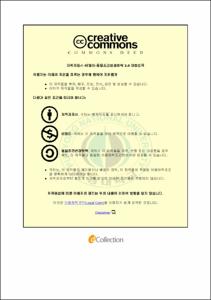중학생이 지각한 학급풍토와 자기효능감 및 학습몰입이 자기주도 학습에 미치는 영향
- Abstract
- This research is to see what effect class climate, self efficacy and learning flow which middle school students perceive have on self-directed learning. The concrete research topics for this research are as follows.
For one thing, what effect does class climate middle school students perceive have on self-directed learning?
Second, what effect does self efficacy middle school students perceive have on self-directed learning?
Third, what effect does learning flow middle school students perceive have on self-directed learning?
Fourth, what effect does class climate, self efficacy, and learning flow middle school students perceive have on self-directed learning?
The subject of this research is 699 middle school students who are from three different schools in Busan; 327 first graders, 186 second graders, and 186 third graders.
The research tool like questionnaires is used for this research. The questionnaires consist of four measures, class climate, self efficacy, learning flow, and self-directed learning. I used Park Ok soon's revision of Kim Chang geol's measure for class climate, and Kim Ah yeong's revision of Kim Ah yeong and Cha Jeong eun's measure for self efficacy. I used Park Hyeonggeun's measure for learning flow and Heo Namjin's measure for self-directed learning.
The data was processed by correlation analysis and multiple regression analysis using SPSS 12.0. The statistical significance was judged by the criterion of 0.05.
The analysis results of these topics are as follows.
For one thing, the low factor of class climate has a high correlation with self-directed learning, especially with autonomous climate and friendly relationship. The most influential factor on self-directed learning is autonomous climate and permissive climate.
Second, self efficacy has a high correlation with self-directed learning. The most relevant factor to self-directed learning among low factors of self efficacy is controlled self efficacy, which has a high effect on self-directed learning.
Third, the low factor of learning flow has a high correlation with self-directed learning, and the most influential factor to self-directed learning among low factors of learning flow is the concentrating factor to learning task.
Fourth, most low factors of class climate, self efficacy, and learning flow have a high correlation with low factors of self-directed learning, and especially controlled self efficacy, task difficulty, concentration on learning task, challenging task, and the balance of competence in sequence have a high effect on them. Therefore, class climate, self efficacy, and learning flow have an influence on self-directed learning, but the most influential factor is self efficacy, and then learning flow.
- Issued Date
- 2011
- Awarded Date
- 2011. 8
- Type
- Dissertation
- Keyword
- 자기주도 학습
- Publisher
- 부경대학교
- Affiliation
- 부경대학교 교육대학원
- Department
- 교육대학원 교육심리전공
- Advisor
- 강승희
- Table Of Contents
- I. 서론 1
1. 연구의 필요성 및 목적 1
2. 연구문제 7
3. 용어의 정의 7
II. 이론적 배경 10
1. 자기주도 학습 10
2. 학급풍토 21
3. 자기효능감 30
4. 학습몰입 38
III. 연구 방법 47
1. 연구 대상 47
2. 연구 도구 47
3. 자료처리 및 분석 52
IV. 연구 결과 53
1. 학급풍토, 자기효능감, 학습몰입, 자기주도 학습 간의 관계 53
2. 학급풍토, 자기효능감, 학습몰입이 자기주도 학습에 미치는 영향 56
V. 논의 64
VI. 요약 및 결론 70
참 고 문 헌 72
부 록 84
- Degree
- Master
- Files in This Item:
-
-
Download
 중학생이 지각한 학급풍토와 자기효능감 및 학습몰입이 자기주도 학습에 미치는 영향.pdf
기타 데이터 / 4.15 MB / Adobe PDF
중학생이 지각한 학급풍토와 자기효능감 및 학습몰입이 자기주도 학습에 미치는 영향.pdf
기타 데이터 / 4.15 MB / Adobe PDF
-
Items in Repository are protected by copyright, with all rights reserved, unless otherwise indicated.